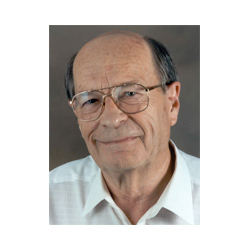From 2002, the transcript of a ProSoundWeb live chat session with industry legend Rupert Neve, designer of professional audio recording equipment and credited as the inventor of the recording console.
Fletcher: Well, this man really needs no introduction. Pretty much anyone who is involved with audio production seems to say his name a few times a day in relation to something.
Be it consoles we would like to work on, or individual modules we would like to own, or equipment that is used as a point of reference for our industry.
I’m probably asked 10-15 times a day if “it sounds like a Neve” [the point of this ‘chat’ is to try to get a bit better definition of just what that means].
So here’s an opportunity to have somewhat of a conversation with the first name we think of when it comes to outstanding sounding audio equipment, a man I am rather proud to call a friend… Mr. Rupert Neve.
Good evening Rupert.
Rupert Neve: Good evening…
Fletcher: Here we go…
chrissugar: In the early days [1073], the use of the output transformer was a technical necessity or you used it to achieve a special sound…
Rupert Neve: This question goes to the heart of my original designs. I used transformers because in those days it was the only professional way of interconnecting equipment. We used balanced lines by default, if you like.
Everything was balanced and worked between 600 ohms termination. This meant that the modules which you are familiar with today would be reconnected, recycled endlessly without the problem of ground loops and so on…. When they sell old modules if doesn’t benefit me in my old age trying to build a retirement fund.
chrissugar: What do you think about the new designs with op-amps [5532] compared to the old transistor designs?
Rupert Neve: Well, to answer these I would start by saying how long have you got? One of the qualities of the original designs is that they were all single ended. This meant that there was no crossover distortion. Every IC, or maybe I should say almost every IC, includes the push-pull output stage and of course, it has very small power capability.
Such a stage will produce small amounts, maybe some of them not so small, of crossover distortion.
Which is to say that there are high order harmonics present which are not in the original music—and I’m even incorrect calling them harmonics. They are spikes, which occur at the repetition rate of the signal frequency.
And, although small in nature, it can be perceived not only by the trained ear, but even by, shall we say, “Joe Public.” The way he would notice it is that it produces sensation of frustration as he listens to music.















